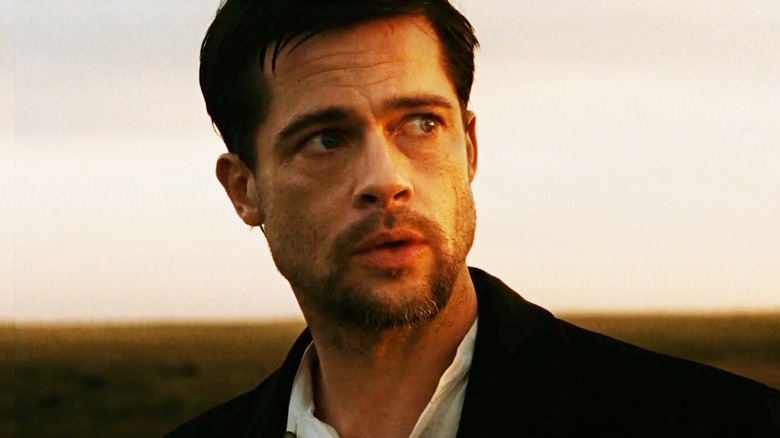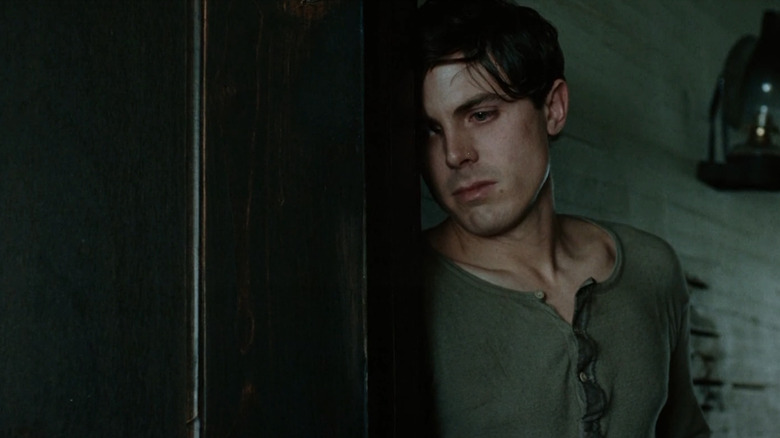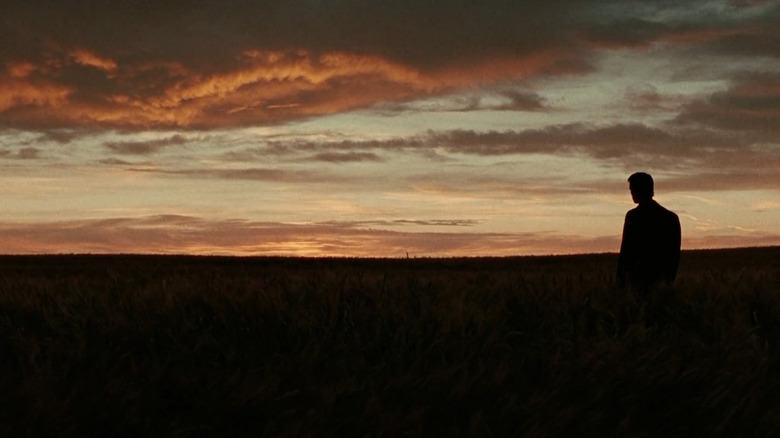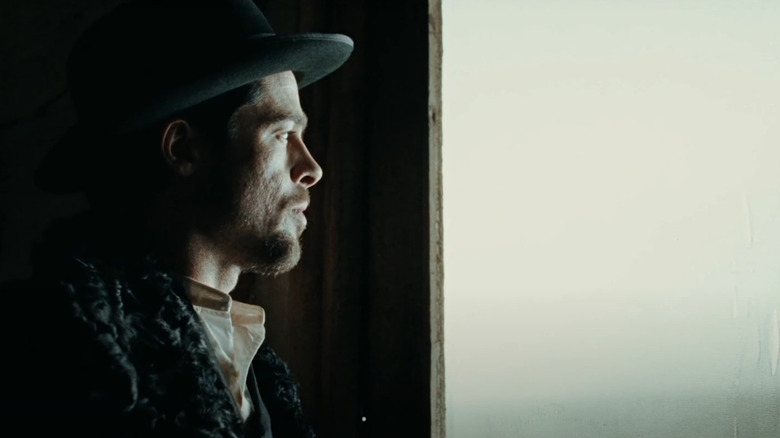Warner Bros Thought The Assassination Of Jesse James Was Going To Be 'A Shoot-'Em Up'
The Western has been on life support for decades. One of the most popular and bankable genres in the silent film era, it experienced a decline in the 1930s, only to come back and dominate once again in 1939 with films such as the John Wayne-starring "Stagecoach" and James Stewart-led "Destry Rides Again." It would remain popular for several decades after that, producing more stars of the genre, including Clint Eastwood, before fizzling out once again by the 1970s. Since then we've seen Westerns pop up sporadically here and there, with some, including 1992's "Unforgiven," and 2010's "True Grit," enjoying significant success. Even in the last decade, we've seen some outstanding modern takes on the Western. But on the whole, the genre just isn't what it once was.
In the early 2000s, when Warner Bros. greenlit "The Assassination of Jesse James by the Coward Robert Ford," they were hoping to score a breakout hit in the style of "Unforgiven." The studio put up $30 million for director Andrew Dominik, who'd previously helmed the Eric Bana-led "Chopper" in 2000, to adapt Ron Hansen's 1983 novel based on the life of Jesse James. Brad Pitt and Casey Affleck were brought in to star, and Warners expected to see them shooting their way through some Clint Eastwood-style Western action. But Dominik had other plans.
As the Los Angeles Times reported, the director, "wanted to deliver a dark, contemplative examination of fame and infamy, in the spirit of director Terrence Malick." And that's exactly what he did. "The Assassination Of Jesse James" is a slow-burning interrogation of American myth, the public's fascination with celebrity, and the space between belief and reality. Unsurprisingly, when Warner Bros. executives were shown the film, they were slightly bemused.
A lament for the death of the Western
Andrew Dominik's 2007 Western is almost an anti-Western. "The Assassination Of Jesse James" serves to undermine much of what made the genre popular in the 20th century, as well as James himself. The film depicts him not as the heroic, legendary outlaw as he's often known but as a flawed, violent man out for himself. In the film, Ford (Casey Affleck) tries to ingratiate himself with James (Brad Pitt), before his hero tells him that everything Ford has read about him is a lie. Still, the newly hired gun continues to buy into the myth of his idol as a heroic figure. In that way, he represents the public — enamored with celebrity to the point of fetishization.
Dominik, who recently caused controversy with his Marilyn Monroe biopic "Blonde," was concerned with the clash between reality and belief, dramatizing that clash not just through the film's depiction of James but of the landscape in which he exists. This isn't the land of cowboys vs native Americans, where rugged frontier heroes triumph over their enemies and establish their dominance. The landscapes in "Jesse James" are often barren, desolate, yawning plains, adding to the haunting atmosphere of Dominik's film and equating to what almost seems like a two-and-a-half-hour long lament for the death of the Western and the cultural myths on which it was based.
And if you're a major Hollywood studio, you're not really in the market for something that undermines the very idea of celebrity — a concept key to selling movies. And if an action-packed Western is what you thought you were paying for, you're also probably not too keen on getting something that subverts the typical action and excitement of a Western.
'More shots of slow-moving clouds'
When Andrew Dominik screened his cut of the film to Warner Bros. the response was tepid at best. As the Los Angeles Times reported, the main issues were the film's tone and run time, with Dominick struggling to deliver a cut that satisfied the studio. According to the outlet, there were there two different versions of the film at one point: Dominik's own and one from Brad Pitt, who also served as producer. Sadly, it seems we'll never see the full Dominik cut of "Jesse James."
Speaking to Entertainment Weekly, Hugh Ross, who narrated the film and served as first assistant editor, recalled how he was impressed by the footage that came in and had no idea the film would run into trouble: "It was always the feeling of, 'We really like this. I wonder if anyone else is going to?'" But pacing problems became more pronounced as the edit came together, while Warner Bros. was, perhaps unsurprisingly, not impressed with the somber, reflective movie they were seeing develop.
Ross remembered running a screening for two studio executives as a particularly low moment, recalling how once the movie was over, he overheard the two talking outside: "I specifically remember one of them saying, 'What we really need is more shots of slow-moving clouds.' And they both laughed. They said that right in front of me. They don't care who I was. I just remember thinking, 'Wow, nobody gets it.'" And it seems nobody did. Or at least Warners didn't give them a chance to.
The Assasination of Jesse James is an overlooked classic
Eventually debuting in September 2007, two years after filming had wrapped and a year after it was originally slated to release, "Jesse James" hit just five theaters and brought in $147,812 opening weekend. It would expand to 301 screens and eventually bring in just over half its budget, with a global box office take of $15,313,631. By all accounts, it was a commercial failure.
Hugh Ross told Entertainment Weekly: "Warners just treated it so badly and never understood what they had. It always completely perplexed me because the screenplay is a real faith adaptation of [Ron Hansen's] book, and the movie is exactly the screenplay. I don't know what they were expecting." But we know Warners was expecting something closer to a Clint Eastwood-style shoot-'em-up, which is why they chose to basically dump the movie in five theaters for opening weekend and seemingly give up on it before it was even released.
Happily, despite its poor box office returns, "Jesse James" was met with critical acclaim, and garnered two Oscar nominations — Casey Affleck for Best Supporting Actor and Roger Deakins for cinematography. The movie has since gained even more recognition, and is now viewed as one of the 21st Century's best films. And rightly so, slow-moving clouds aside.



